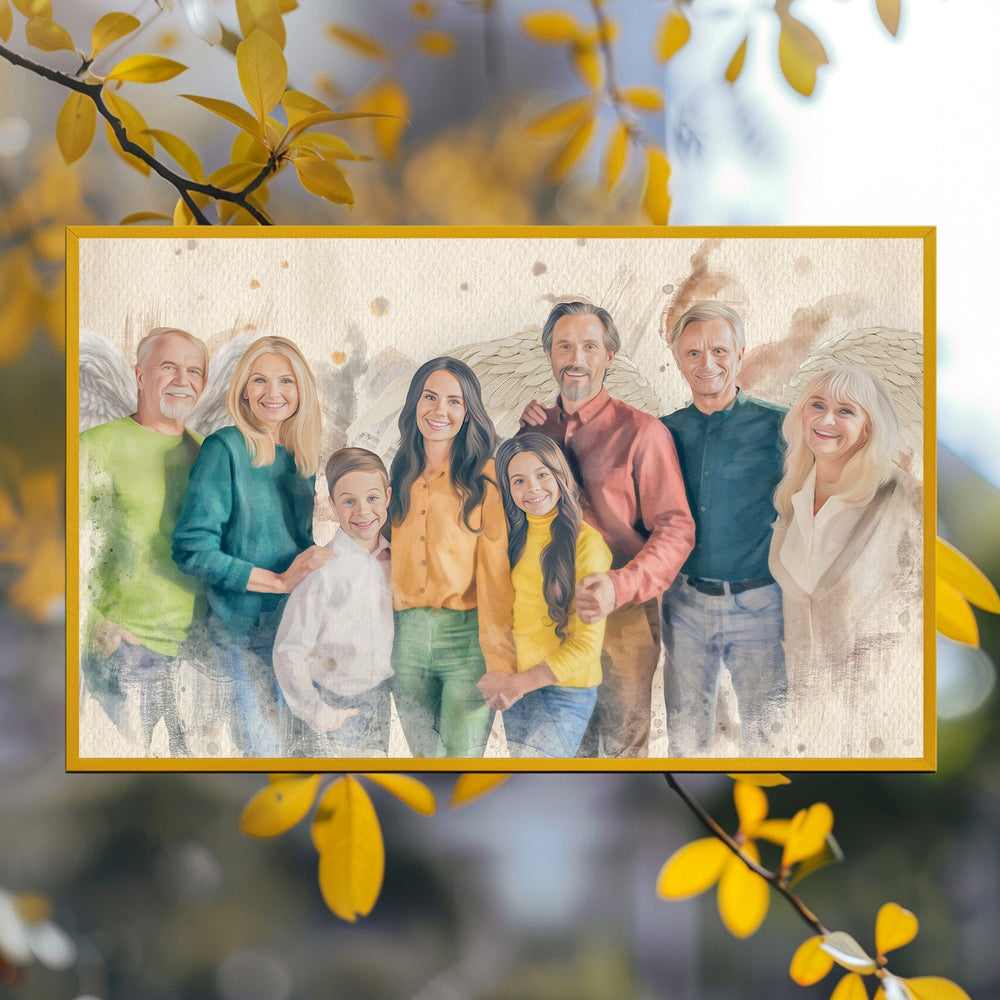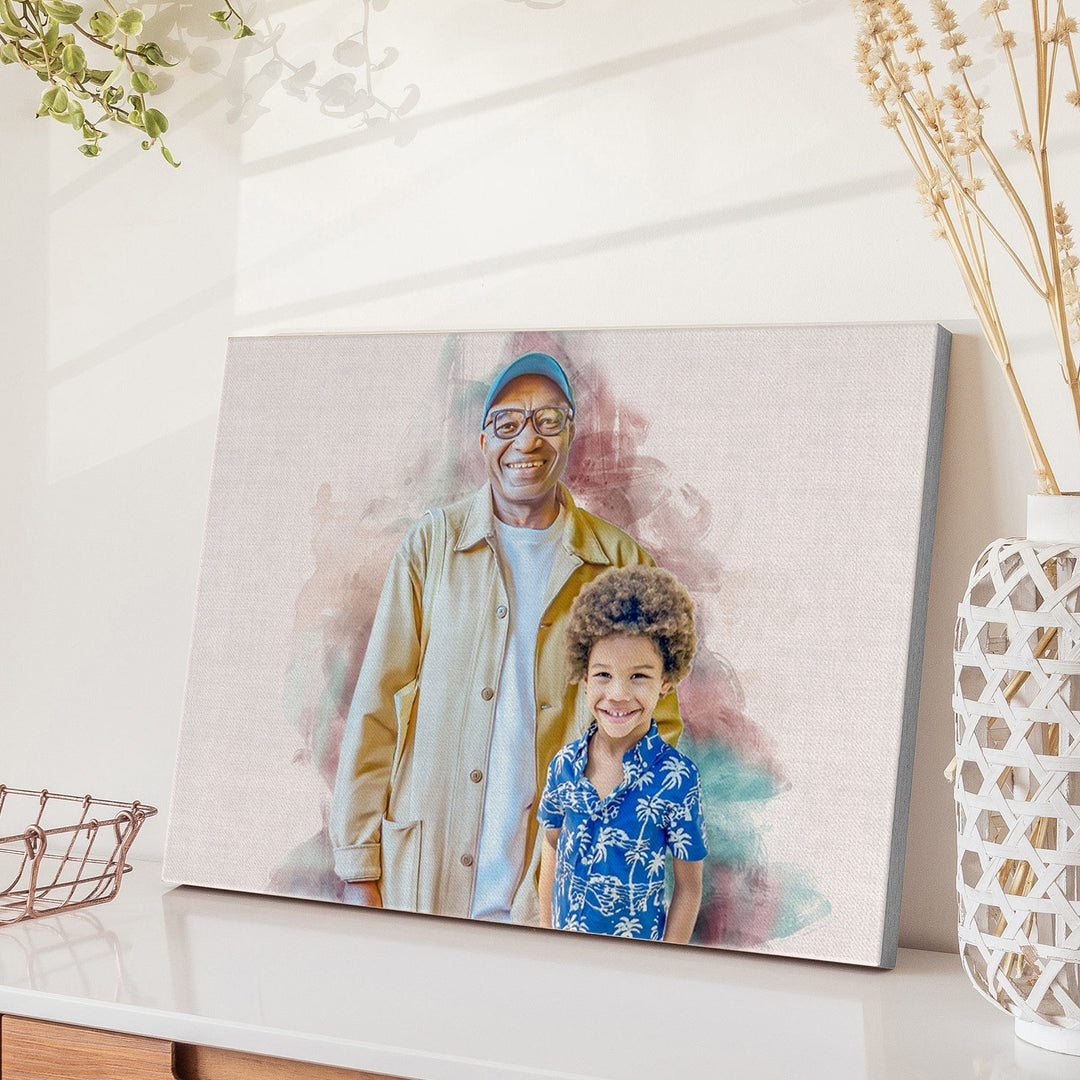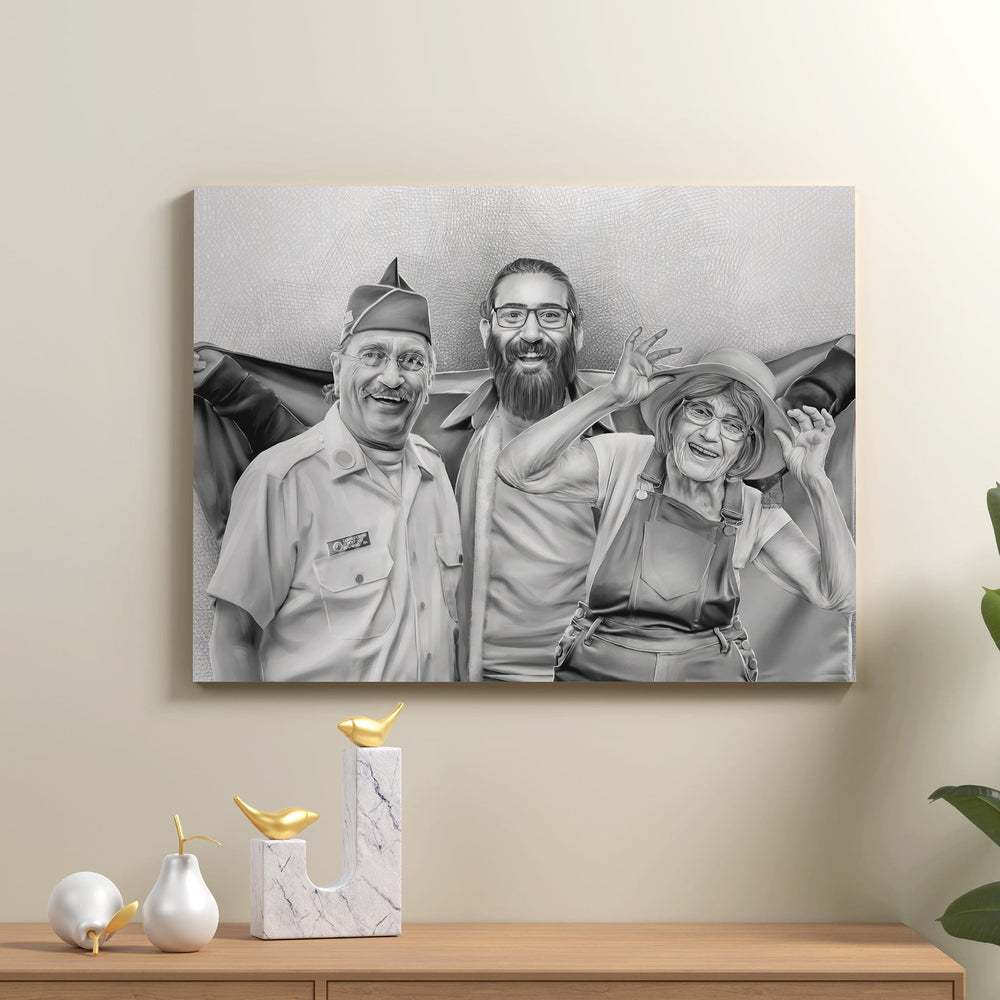Charcoal vs Pencil Drawing: Is There a Difference?


Photo by cottonbro studio from Pexels
Pencil and charcoal are two of the most accessible drawing mediums. They enable expressive linework and aid in the rendering of values through blending. This method may have a considerably lower learning curve for many individuals than learning how to use layers. Charcoal and Pencil, two other drawing media, have lengthy creative traditions. You've probably utilized both in your everyday life and creative activities, but you might have trouble articulating the difference between the two.
Artists should select the appropriate drawing tool based on the outcomes they want to achieve, as each media requires them to employ a unique set of drawing approaches. Utilize this guide to assist you in deciding which drawing tool(s) you would like to incorporate into your creative practice.
What is a pencil?
A pencil is a fundamental tool in both art and writing, renowned for its simplicity and versatility. It typically consists of a cylindrical casing, traditionally made of wood, which encloses a core of graphite or a graphite-clay blend. This core, often referred to as the pencil lead, is the primary mark-making component. The hardness of the lead varies, indicated by the grades of pencils, allowing for a wide range of applications – from darker marks and bold lines in drawing to precise lines for technical work. Despite its name, the lead contains no actual metallic lead, being a non-toxic mixture of graphite and clay.
Mechanical pencils, another popular type, use thin, replaceable leads and offer consistent line width, making them ideal for technical drawings and detailed sketches. The evolution of pencils, from their humble origins to modern variations like Carbon pencils and woodless pencils, reflects their enduring importance in both artistic and practical domains.
Types of Pencils
Pencils, a staple art, education, and professional work, come in various types, each serving distinct purposes. Understanding these variations is key to choosing the right tool for your specific needs.
Graphite Pencils
The most common type, graphite pencils are used widely for writing and sketching. The core, made of a graphite-clay blend, determines the hardness of the pencil. These range from hard, light-marking pencils (H grades) to soft, dark-marking ones (B grades). Graphite Pencil cores can vary in thickness, with thinner lines suited for detailed work and thicker lines for bold, expressive marks.
Charcoal Pencils
Ideal for expressive drawings and quick sketches, these pencils use charcoal as the core material. They are great for achieving darker values and expressive lines, commonly used in figure drawing and portraiture. Willow charcoal and compressed charcoal are popular choices for their rich, dark tones and varying hardness.
Colored Pencils
These are used for adding color to drawings and come in a vast spectrum of hues. They can have oil-based or wax-based cores, influencing their texture and blending capabilities. Derwent Graphitint pencils, for instance, offer subtle, water-soluble colors, ideal for nuanced artworks.
Mechanical Pencils
Known for their precision and consistency, mechanical pencils are favored for technical drawings and environments where sharpness and fine detail are key. They use replaceable leads and maintain a constant line width, making them a popular choice for architects and engineers.
Pencil Drawing Portraits
Pencil drawing portraits offer a unique way to capture and immortalize personal moments and cherished memories. Each type of pencil, from graphite to colored pencils, brings its own charm and character to these artworks. Here we explore four distinctive pencil drawing approaches:
Christmas Graphite Drawing

Order your custom christmas graphite drawing here
Celebrate the festive season with a heartwarming portrait. A Christmas Graphite Drawing can capture the essence of the holiday spirit, whether it's a scene of family gathering around the Christmas tree or a serene winter landscape. The monochrome tones of graphite lend a classic, timeless feel to these drawings, emphasizing contrasts and shadows to create a cozy, intimate atmosphere.
Pet Pencil Sketch

Get your pet pencil sketch here
For animal lovers, a Pet Pencil Sketch is a beautiful way to honor our furry friends. Using either graphite or charcoal pencils, these sketches can capture the lively spirit and individual quirks of pets. The soft, varied lines of pencils are perfect for rendering the texture of fur and the expressive eyes of animals, creating a cherished keepsake for any pet owner.
Colored Pencil House Drawing

Get your colored pencil house drawing here
A Colored Pencil House Drawing is a vibrant way to depict one's home. Whether it's a childhood home, current residence, or a dream house, colored pencils bring these structures to life with vivid colors and intricate details. The layering and blending capabilities of colored pencils allow for a realistic portrayal of different materials and landscapes, turning a simple house drawing into a vivid, colorful masterpiece.
Colored Pencil Dog Drawing

Get your colored pencil dog drawing here
Similar to pet sketches, a Colored Pencil Dog Drawing focuses on capturing the unique personality and features of dogs. The range of colors available in colored pencils can perfectly replicate the various fur colors and patterns of different dog breeds. These drawings can be as detailed or stylized as desired, making them a versatile choice for dog portraits.
What is charcoal?
Charcoal is a versatile and historic art medium, primarily used for drawing and sketching. It is produced by burning organic materials, such as wood, in a low oxygen environment, resulting in a form of carbon residue. This process preserves the charcoal's ability to create rich, deep blacks and a range of darker values, making it ideal for achieving dramatic contrasts and expressive marks in artwork.
Charcoal comes in various forms: willow charcoal, known for its crumbly texture and ease of erasure; compressed charcoals, which are harder and provide darker, more consistent lines; and powdered charcoal for covering large areas. Charcoal's properties allow artists to create both quick, dynamic sketches and refined, detailed works. Being a form of carbon, it's also considered one of the oldest artistic mediums, historically linked to the earliest cave paintings. Whether used for its boldness in expressive lines or subtlety in lighter values, charcoal remains a favorite choice among artists for its flexibility and the unique depth it brings to their work.
Uses of Charcoal Pencil
Charcoal pencils offer a unique blend of control and versatility in the realm of drawing and sketching. These pencils, encasing compressed charcoal in a wooden shaft, provide artists with the ability to create a range of effects, from quick sketches to detailed, finished pieces. They excel in rendering darker values and expressive marks, making them ideal for capturing the play of light and shadow in portraiture and figure drawing. The softer pencils allow for smoother shading and broader coverage, while harder grades are perfect for precise lines and finer details.
Artists often use them in tandem with blending tools, like a paper stump or a piece of scrap paper, to achieve smooth gradations and subtle transitions between tones. Charcoal pencils are also favored for their ability to work well on textured paper, which enhances their crumbly texture and matte finish, adding a tactile quality to the artwork.
Types of Charcoal Pencil
Charcoal pencils are a beloved tool in the artist's toolkit, known for their rich black tones and versatility in drawing. There are several types of charcoal pencils, each with unique properties catering to different artistic needs and styles. Understanding these variations can greatly enhance your drawing experiences and the quality of your artwork.
Willow Charcoal Pencils
These are made from natural willow twigs, burnt to different degrees of hardness. Willow charcoal pencils are known for their soft, powdery texture, perfect for creating lighter values and expressive marks. They are ideal for quick, loose sketches or for laying down the initial outlines of a composition.
Compressed Charcoal Pencils
Compressed charcoal is made by grinding charcoal and then compressing it with a gum or wax binder. These pencils offer darker, more intense lines compared to willow charcoal and are excellent for adding darker values and thicker lines to a drawing. Their firmer texture also allows for more control and precision, making them suitable for detailed work in a finished piece.
Vine Charcoal Pencils
Similar to willow, vine charcoal is made from grape vines and tends to be a bit harder. It's great for quick, fluid sketches and can be easily smudged or blended. Vine charcoal pencils are perfect for artists who prefer a more spontaneous and gestural approach to their work.
Tinted Charcoal Pencils
These are a unique variation, offering the traditional charcoal medium infused with subtle colors. Brands like Derwent Tinted Charcoal provide a range of hues, adding an extra dimension to charcoal drawings. They are particularly useful for adding a touch of color to a predominantly monochrome drawing.
Charcoal Powder Pencils
These pencils contain charcoal powder instead of a solid core, which can be used for covering large areas quickly. They are especially useful for creating soft shadows and for large-scale drawings.
Charcoal Drawing vs Other Types of Pencil Drawing
Charcoal drawing is celebrated for its rich, velvety blacks and ability to achieve a wide range of values, from the darkest shadows to lighter tones. Charcoal's expressive lines and softer texture make it ideal for bold, dynamic sketches and lifelike portraits, capturing emotions and depth with ease.
On the other hand, Graphite Pencil Drawing offers precision and subtlety, known for its consistent lines and sharper details. Graphite's range from hard to soft leads allows for intricate detailing and refined shading, perfect for technical illustrations and detailed studies.
Colored Pencils bring vibrancy and a palette of hues, enabling artists to create vivid, colorful artworks with layered depth and tonality. Each medium – whether it's the deep intensity of charcoal, the meticulous clarity of graphite, or the chromatic richness of colored pencils – caters to different artistic styles and visions, enabling artists to choose the medium that best aligns with their creative expression and the demands of their subject matter.
Charcoal Drawing Portraits
The medium's deep blacks and range of shades lend a unique depth and emotion to each piece. Here, we explore three specific types of charcoal portraits, each with its own charm and appeal.
Family Charcoal Drawing

Order your family portrait charcoal here
A family portrait in charcoal is not just a representation; it's a timeless piece of art that captures the bond and individual personalities within a family. The softness and variability of charcoal allow for the subtle nuances of facial expressions to be beautifully rendered. The interplay of light and shadow can be expertly manipulated to highlight the warmth and closeness of familial relationships. Such a drawing becomes a cherished heirloom, reflecting the love and connection shared by family members.
Charcoal Dog Portrait

Order your dog charcoal portrait here
Dogs are not just pets; they are beloved family members. Capturing their spirit and personality in a Charcoal Dog Portrait is a beautiful way to honor these loyal companions. The medium's ability to render fur texture, from the gloss of a smooth coat to the fluffiness of a shaggy one, makes charcoal ideal for dog portraits. The depth of charcoal also helps in capturing the expressive eyes and playful, yet soulful nature of dogs, making each portrait a touching tribute to man's best friend.
Charcoal Cat Drawing

Order your charcoal cat portrait here
Cats, with their elegant and mysterious aura, make for captivating subjects in art. A Charcoal Cat Drawing can beautifully encapsulate a cat's grace and independent personality. The medium's versatility is perfect for detailing the sleekness of a cat's fur and the sharpness of its features. The contrast between the dark and light areas in a charcoal drawing can effectively convey a cat’s enigmatic presence and the subtle, often whimsical, expressions unique to felines.
FAQs
Is it easier to draw with pencil or charcoal?
The ease of drawing with pencil versus charcoal largely depends on the artist’s preference and the intended outcome of the artwork. Pencil drawing is often considered easier for beginners due to its control and precision. Graphite pencils provide a cleaner, more predictable line and are less messy compared to charcoal. They allow for detailed work and subtle shading, making them ideal for intricate drawings. Charcoal, on the other hand, is favored for its expressive quality and rich, deep blacks. It's excellent for creating dynamic sketches and bold, dramatic pieces but can be challenging to control due to its softer, more smudge-prone nature.
Is charcoal pencil good for beginners?
Charcoal pencils can be good for beginners who are interested in exploring the dynamic range of shading and expressive line work. They offer a bridge between the control of a regular pencil and the expressive potential of traditional charcoal sticks. Beginners can benefit from the charcoal pencil's ability to create bold and sweeping lines, as well as delicate shading. However, it's worth noting that charcoal, in general, can be messier and a bit harder to control than graphite, so there might be a steeper learning curve in mastering the medium. For those new to drawing, starting with charcoal pencils can provide a valuable lesson in handling light and shadow, as well as in developing a looser, more expressive drawing style.
Is charcoal or graphite better for sketching?
Choosing between charcoal and graphite for sketching depends on the artist's style and the desired effect of the sketch. Charcoal is ideal for artists who prefer a more expressive, bold approach to their work. Its ability to quickly lay down a range of tones, from deep blacks to subtle grays, makes it excellent for capturing mood and movement in a sketch. Charcoal is particularly favored for figure drawing and portraiture due to its dramatic and emotive qualities. On the other hand, graphite is better suited for detailed, precise work. It offers a cleaner, more controlled drawing experience, making it ideal for technical sketches, architectural drawings, and detailed studies. Graphite's range of hardness grades also allows for a finer gradation of tones, which can be advantageous in rendering intricate details.
Take Your Art to the Next Level with Memorialize Art
The choice between charcoal and pencil drawing is not just about the medium, but about the artist's vision and style. Charcoal offers expressiveness and intensity, perfect for capturing emotion and movement, while pencil drawing provides precision and subtlety, ideal for detailed and technical artworks. Understanding the unique qualities of each can significantly enhance your drawing experiences, whether you are a beginner or an experienced artist.
Are you inspired to bring your artistic visions to life? Whether you're drawn to the dramatic impact of charcoal or the meticulous detail of graphite, Memorialize Art is here to help you immortalize your memories and ideas. Our platform specializes in personalizing artworks, transforming your creative concepts into stunning pieces. From expressive drawings to detailed sketches, our artists are adept at both charcoal and pencil drawings, ensuring your final piece resonates with personal significance. Visit Memorialize Art today, and let's embark on a journey to capture your cherished moments in art.










